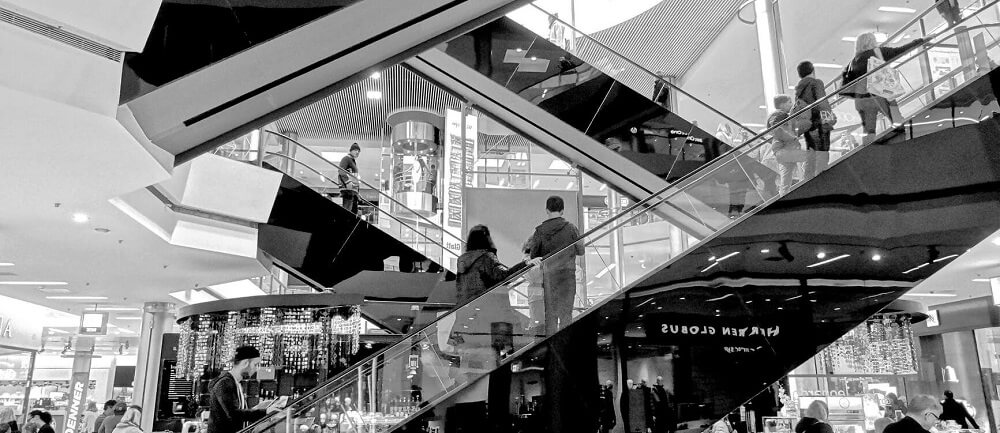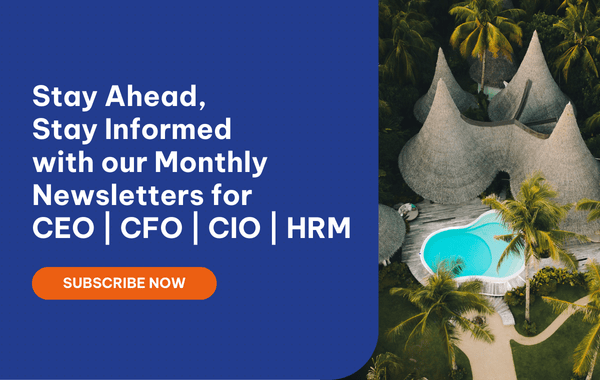Innovative retailers are utilising IoT to improve store operations, enhance customer experience and to drive more conversions. IoT technology is said to be reshaping and revolutionising the retail industry, yielding advances and new opportunities in customer service, throughout the supply chain and in brick-and-mortar stores plus other channels.
Basically, Internet of Things (IoT) is a network that connects different “things” through the Internet and is embedded with sensors. The connected devices are able to communicate, analyse and share data via networks and cloud-based software platforms to provide useful insights for businesses.
Read more: Back to Basics - Internet of Things (IoT) Explained
Over time, IoT has been integrated into multiple tools including RFID inventory tracking chips, cellular and Wi-Fi tracking systems, digital signage or right in the customer’s mobile device.
How can your retail business benefit from Internet of Things?
Customer experience
IoT reshapes the “customer journey” as it changes how a customer uses a product or service and how sellers create value. The collected and analysed data can help create new processes or technologies to enhance the customer’s experience. When the system moves to the cloud, a new process is generated, in which business can predict and manage the impacts on performance and the delivery of products. From the customer’s point of view, IoT is bringing down the walls of ownership and removing those points of irritation which can, collectively, send a customer relationship over the edge.
Read more: Managing Inventory – the Next Essential Step for Retailers (P.1)
Product
IoT application enables retailers to try new approaches, enhance features to do current things better or different form factors for new uses. They can gain information of not only what is selling fast but also the reasons why. By collecting data of a specific product and its main buyers, how much the display of the product affects the sell rate, will allow predictions for thriving future sales.

Opportunities
Retailers at the forefront of the market are those who can make the best use of IoT with the purpose to seek out new methods of acquiring customers and increasing revenues. Small innovations, such as reducing waiting time by using sensors to update and identify long wait, correspondingly send out alerts to customers, are making huge changes to the overall customer experience. To make the most of the IoT opportunity, it is highly critical for retailers to analyse how they can leverage IoT to transform the business by unlocking new growth opportunities and deepening customer loyalty.
Read more: 4 Digital Retail Trends to Look Out for in 2018 and Beyond
The Internet of Things in retail: The combination of digital and physical experiences
One of the key characteristics of IoT is that it builds a bridge between the physical and digital worlds. Specifically, connecting the virtual and physical shops has been made possible in the retail industry for quite a long time. IoT helps retailers to provide services anytime, anywhere and anyhow their customers want.
One example of the customer-centric approach is Under Armour’s case – the American footwear manufacturer and sports apparel. They are testing the application of smart chip on their footwear product. The chip is connected to various apps: MapMyFitness, MyFitnessPal or Endomondo to gather data and analyse the way a person runs. The insights are then used to create a revised and customised piece of footwear.
Read more: Is Pop-Up Retail More Than Just a Passing Trend?
Retailers can connect with customers through the application of sensor and smart beacon technologies in their physical stores. From ordering online and shipping directly to customer’s home to updating the storage status so that the customers can make purchases without frictions. For example, installing smart sensors in a retail shop helps to inform the customers when a top-selling item is out of stock and when it will be refilled, or, suggest the closest location where they can still buy that item. In both cases, they can choose to simply order the item online and have it shipped right to their doors.
Read more: Internet of Things from the Food and Beverage Industry Perspective
.jpg?width=711&name=business-computer-connection-450035%20(1).jpg)
IoT helps retailers and meet customer expectations
When a retailer is successful in making customer’s buying journey both online and offline meets, this means that they have gained further understanding of customer behaviour and expectations. When consumers shop for different products, they usually have different shopping journeys. For example, a customer looking for a new dishwasher would search for the item information online first but would probably buy it in-store. Imagine how would they feel if they arrived at your store and find out the product they want is out-of-stock? Your business can avoid this situation by planning out how much physical space they need for carrying stock in-store, which product is in high demand—and how much they can keep in a warehouse to avoid any possible stock shortage.
Read more: Amazon Go - Re-shaping the Omnichannel Retail Experience
In order to meet the customer’s expectation, businesses need an immense amount of analytics and study of customer patterns across a variety of platforms. Insights provided by IoT can help to eliminate frustration on both sides of the transaction and add support to the supply chain management. For instance, retail merchandisers have installed smart sensor onto shopping carts. This technique allows them to visualise their shopper’s flows within the store, understand their shopping pattern, thus refine the current procedures, collect valuable data for even deeper analysis.
Another example is the Levi Strauss’s case study of applying RFID antennas on all of their items. Which leads to the constant tracking of the Stock Keeping Unit (SKU) and amass data for deeper analysis on selling performance. As the stock is constantly scanned and updated, the system can locate and keep track of every item in the store - increasing inventory visibility to 100 per cent and enabling the staff to replenish the shelves when needed. Additional information about what items have been touched and tried on, high traffic stocks, and how to display the store for the highest sale profit can help raise both business performance and customer experience.
Read more: Retailers and the challenge from mobile devices
The future of retail business aligned with the development of the Internet of Things technology. IoT brings many advantages to retailers, such as making store operations more efficient thanks to the connected devices’ ability to track inventory status in real time. Or the possibility of improving the customer’s store journey by increasing the merchandise engagement through devices such as smart sensors and beacons.
Like what you have read? Subscribe to TRG Newsletters to always stay informed on the latest trends in the IT and digital industry.
 English
English  Vietnamese
Vietnamese 


